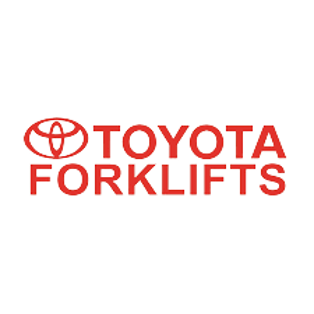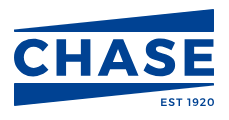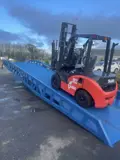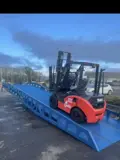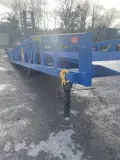Forklift loading ramps
Forklift loading ramps, also known as forklift ramps or loading dock ramps, are essential equipment used to facilitate the movement of goods between different levels, such as from ground level to the bed of a truck or from a loading dock to a warehouse floor. These ramps are designed to allow forklifts and other heavy equipment to smoothly and safely load and unload items.
Here are some key points to consider when it comes to forklift loading ramps:
Types of Forklift Loading Ramps:
-
Portable Loading Ramps: These ramps are movable and can be positioned as needed. They are often used when loading and unloading from different locations or vehicles.
-
Stationary Loading Ramps: Stationary ramps are installed in a fixed location, such as a loading dock. They provide a permanent loading solution for consistent operations.
-
Yard Ramps: Yard ramps are larger ramps used to bridge the gap between ground level and a higher platform. They can be used in outdoor areas where loading docks are not available.
Key Considerations:
-
Weight Capacity: Choose a loading ramp with a weight capacity that accommodates the heaviest loads your forklift will be handling.
-
Length and Gradient: Consider the length and slope of the ramp. Longer ramps generally result in gentler slopes, which can be safer and more manageable for forklift operation.
-
Materials: Loading ramps are often made from steel, aluminum, or a combination of both. Consider the material's durability and weight when making your choice.
-
Surface Traction: Ensure that the ramp's surface provides sufficient traction for forklift tires, especially in wet or slippery conditions.
-
Safety Features: Look for safety features such as guardrails, anti-slip surfaces, and edge protection to enhance the safety of both the operators and the loaded goods.
-
Loading Height: Measure the height difference between the surfaces you're bridging to ensure that the ramp provides a suitable angle for safe loading and unloading.
-
Mobility: If you need portability, choose ramps with built-in wheels or other features that facilitate moving and positioning.
-
Regulations: Be aware of local safety regulations and standards related to loading ramps. Compliance ensures safe operations and avoids potential legal issues.
Benefits of Forklift Loading Ramps:
-
Increased Efficiency: Loading ramps streamline the process of loading and unloading goods, reducing downtime and increasing productivity.
-
Flexibility: Portable ramps allow for flexible loading and unloading at different locations, making them versatile for various operations.
-
Cost Savings: Using loading ramps can reduce the need for additional loading equipment or specialized loading docks.
-
Safety: Properly designed and maintained ramps provide a safe means of moving goods between levels without the risk of accidents or damage.
Whether you're considering a portable, stationary, or yard ramp, it's important to choose a loading solution that meets your specific needs and ensures the safety of your operators and equipment. Consulting with professionals who specialize in loading equipment can help you make the right choice for your operation.

